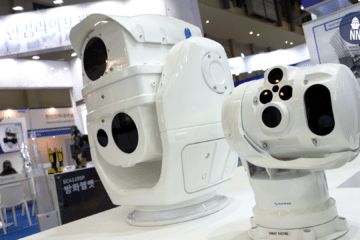General Electric press release
Power Conversion, part of GE Vernova, brings capability from its extensive electric naval ship system references in a wide range of applications from the largest, complex warships to the latest support ships.
“Power Conversion brings specialized naval engineering expertise for the most demanding specifications, but with a commercial marine approach. That means electric architectures are practical across the fleet. Through integrated electrification, energy management, automation and control, power in the ship’s electric grid can simultaneously supply high-energy defense and mission systems and propulsion. Energy-efficient electric architectures also serve as an effective way to integrate new, cleaner, energy sources as they emerge, and host digital technologies to implement more autonomous systems.”
Andy Cooper, Managing Director at Power Conversion
Electro-magnetic (EM) launch technology and the associated electrical systems are rapidly developing and being considered for a broader set of future naval platforms beyond typical full scale carrier applications for manned airframes. At MADEX, Naval Sales Director at Power Conversion, Ben Salter, will deliver a presentation that provides an overview of the EM launch programs to date, along with advancements made in technologies, to meet potential, future EM launch needs, especially for naval unmanned aerial vehicle (UAV) applications. Power Conversion has completed several de-risking demonstrators and programs of the core EMKIT (electro-magnetic kinetic integrated technology) and EMCAT (electro-magnetic catapult) technologies, using simulation, reduced scale and full scale and land-based testing facilities.

GE Marine, a division of GE Aerospace, is a world-leading manufacturer of aeroderivative marine gas turbines ranging from 4.5 to 52.7 megawatts (MW). Currently, more than 1,500 GE gas turbines serve 39 navies globally on more than 700 of the world’s most sophisticated naval surface combatants.
“The LM2500 family of gas turbines is a preferred engine choice because of its best-in-class power density and reliability. Coupled with its ease of maintenance and interoperability with other Navies, this engine family is the preference for the world’s newest naval programs: US Navy Constellation Class Frigate, Spanish Navy F110 Class Frigate, and Finnish Navy Pohjanmaa Class Corvettes. Additionally, GE is proud to continue to support the Korean Navy’s KDX3 Destroyer and the Italian Navy’s FREMM Frigate programs.”
Kris Shepherd, Vice President of GE Aerospace’s Marine business
Together, GE Vernova’s Power Conversion business and GE Aerospace’s Marine business have provided naval power and propulsion systems for 42 navies onboard more than 755 ships.

To date, ROK Navy has selected GE to supply 163 marine gas turbines for 95 ships. GE’s longstanding partner in Korea, Hanwha Aerospace, co-manufactures the engine components for the ROK’s naval and industrial gas turbines and assembles, tests, and provides local service support of the GE naval engines.
GE has proven solutions across different electric propulsion configurations: IFEP or hybrid electric drive (HED), an option that adds electrification capability to mechanical drive vessels. GE’s IFEP system is proven across some of the world’s leading naval platforms, including the United Kingdom Royal Navy’s Type 45 destroyers, the Royal Navy’s Queen Elizabeth class aircraft carriers and the United States Navy’s Zumwalt destroyer. GE’s HED system uses the 3.4 MW shock-tested motor used by for the U.K. Royal Navy Type 26 frigate, as well as the Global Combat Ship vessel design.






